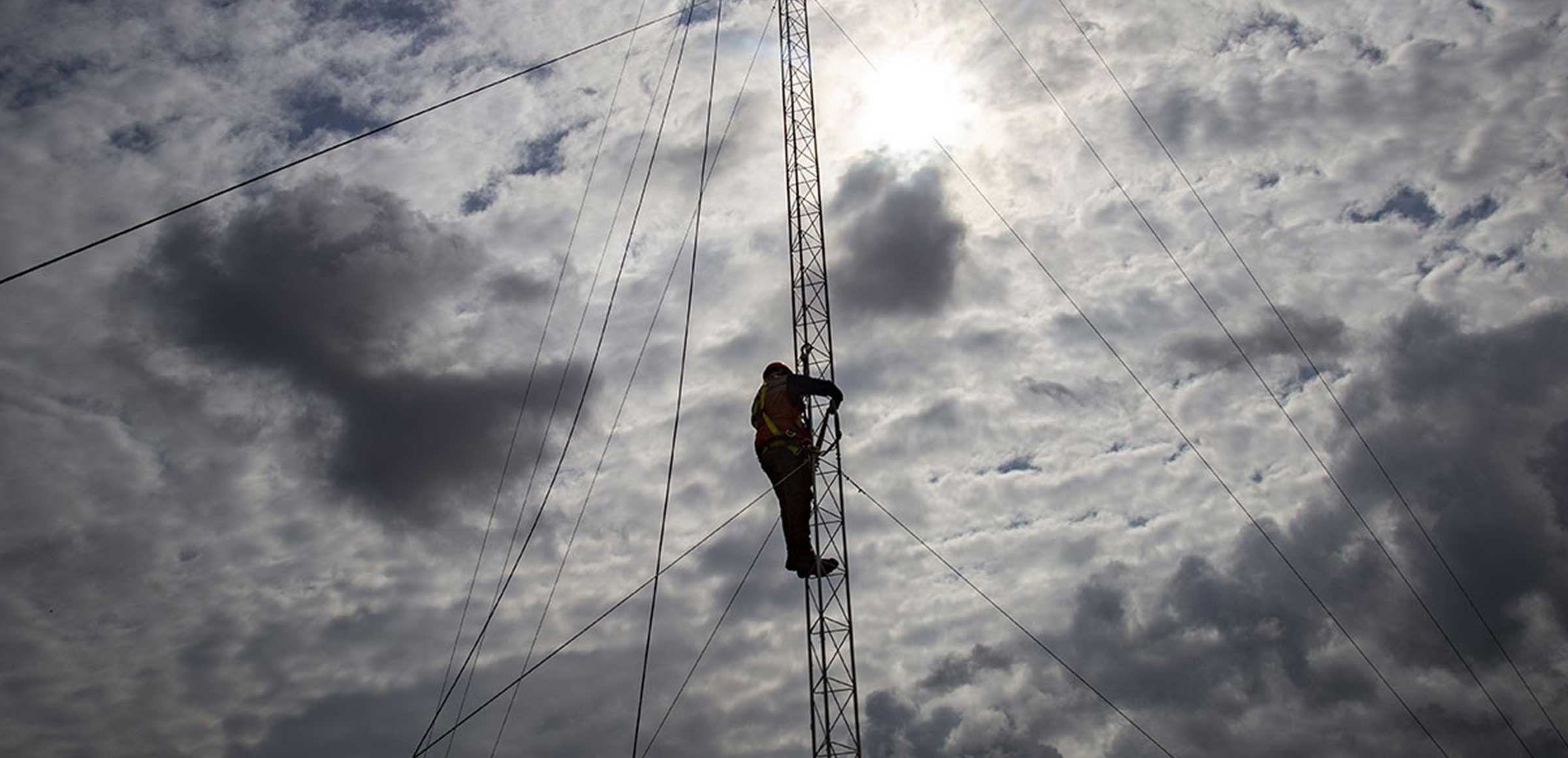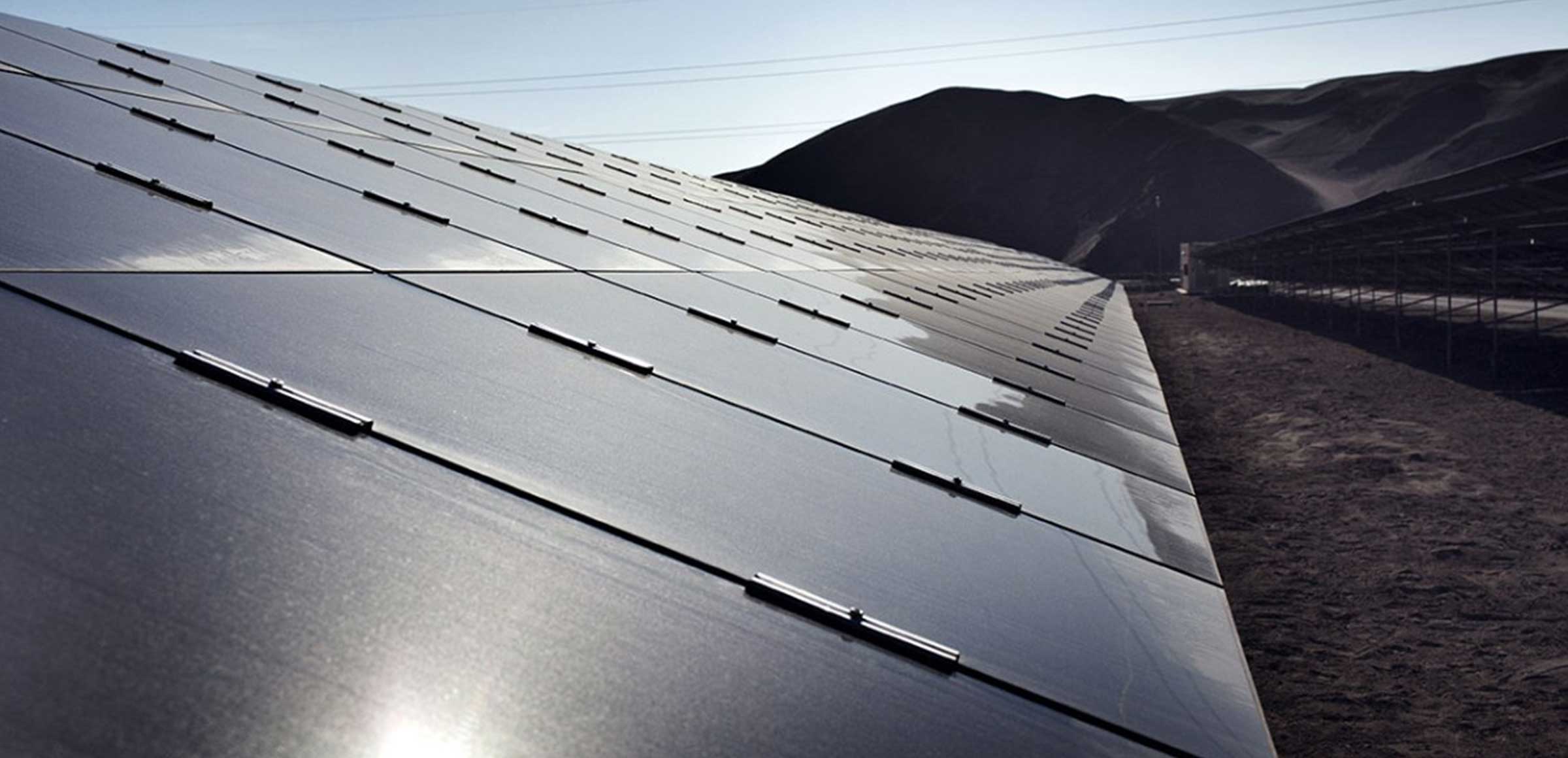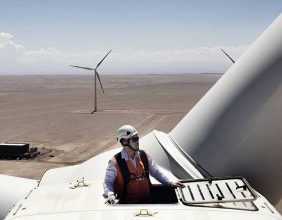EGP is speeding up towards energy transformation
Growing and running towards a leading role. This is Enel Green Power’s goal between 2013 and 2015: years of energy transformations, landing in new countries and establishing a fresh perspective on sustainability. All of this is part of the third installment in our story dedicated to the 10-year history of EGP.
It’s January 20 2013 and millions of people have good reasons to look at the future with renewed confidence. Barack Obama has officially started his second term in office and around the world the general consensus is of a breath of fresh air brewing with bright prospects, for the environment and for the development of renewable energy.
In its second inaugural address, Obama states that: “The path towards sustainable energy sources will be long and sometimes difficult. But America cannot resist this transition, we must lead it. We cannot cede to other nations the technology that will power new jobs and new industries, we must claim its promise.” Five months later, the President outlines his “Climate Action Plan” that calls for 20 GW-worth of new renewable energy by 2020, along with more stringent energy efficiency measures and mitigation plans to curb the effects of climate change.
While Washington’s policy makers seem fired up for great things to come, in Rome, people at EGP’s headquarters are determined to rise up to the challenge: the 2013-15 time frame is characterized by determination and cleverness, as the prerequisites to attain a commanding role in the global renewable energy business.
“We market ourselves as the smart, winning, thrifty and sustainable solution. But in order to be perceived as such, we need to be humble, since we compete in a very dynamic and competitive global arena.”
– Antonio Cammisecra, current CEO of Enel Green Power
From feed-in-tariff to competitive tenders
In a context of growing complexity, it’s fundamental to keep up the momentum in order to sustain economic growth. The International Energy Agency (IEA) states that while the fulcrum of energy demand is gradually shifting towards emerging economies and the cost of technologies is on a downward trend, renewable energy is able to account for almost half of all new power generation going online, thanks to the strong inputs coming from Asia, Europe and North America.
“We anticipated how costs were going down but not the sheer speed of this downward trend and its amplitude” in the words of Roberto Deambrogio, today’s Head of Communication at Enel. Lower energy production costs, coupled with storage capabilities together with added flexibility and availability are all factors that play out in hastening the current energy transition, while the sales model of renewable energy isn’t immune to changes: from an incentive-rich system, we move towards competitive tenders and Power Purchase Agreement (PPA) that are none other than long-term partnerships between the energy supplier and its client.
These are the years of the corporate world - especially High-Tech giants - developing a strong interest in the sustainability bandwagon, influenced in no small part from an economic convenience, lower prices and lesser risks, together with an ever growing interest consumers are expressing in environmentally-friendly choices. It’s a veritable paradigm switch that replaces the established relationship between energy buyers and sellers in favor of new long-term partnerships that can last up to 25 years and who are centered on sustainability.
Alongside with following the latest business trends, between 2013 and 2015 Enel Green Power is in the midst of a dramatic change in the way it perceives and deals with the environment and its wellbeing. A new business model takes shape, based on sustainability while upgrading and innovating the previous corporate social responsibility (CSR) model that was previously adopted at a Corporate level.
The new kid in town is the Creating Shared Value model (CSV), first theorized in 2011 by Mark Porter and Mark Kramer, explaining how sustainability becomes the guiding principle inspiring every business choice as well as a strategy outlining the way to create, plan, manufacture and manage a power plant. Each one of these individual steps is marked by a special attention towards environmental protection, a rational use of resources, the promotion of health and worksite safety, the circular economy as well as creating new development opportunities for local communities.
A shift towards creating shared value
One of the key steps in implementing the CSV model is the sustainable worksite model. This is a combination of best practices and constantly updated procedures that are established to mitigate the impact of the worksite along with the creation of positive relations with the communities that dwell near all EGP power plants.
The sustainable worksite model found one of its first applications in Tuscany, at the new Bagnore 4 geothermal power plant. This is where tests were carried out to lower noise pollution levels and to ensure the plant is perfectly embedded in its local milieu.
When sustainability per se is concerned, one of the first EGP-branded projects took place in India, in collaboration with the Barefoot College of Tilonia, in the State of Rajasthan, where women from secluded hamlets in 9 LATAM countries were taught on how to build, setup and manage small-sized solar plants.
This way, women can come back to their villages as newly-formed “solar engineers” that have gained the technical knowledge enabling them to transform their lives and the future of their communities.
Energy storage systems are ready to step in
Since its onset, EGP has acknowledged how there can’t be growth without innovation. And in the 2013-2015 time frame the biggest challenge comes from turning intermittent energy sources like solar and wind in reliable and consistent assets. Hence come the first storage systems from EGP.
2015 saw the first implementation of such systems in the Pietragalla wind farm in Basilicata, as well as in the Catania 1 solar park. Large battery packs were put in place to store energy and release it in the grid whenever needed.
The next step takes us across the Atlantic ocean towards Chile, where this load of acquired knowledge can be put to use in the Atacama desert, where EGP has set-up in the Cerro Pabellón plant a state-of-the art microgrid that works on a hybrid energy storage system, combining lithium-ion batteries and hydrogen fuel cells that deliver clean energy to benefit the EGP workers that service the local geothermal plant.
Cerro Pabellón is a record-holder of its own kind: it not only houses a cutting-edge storage system, but it’s also South America’s first ever geothermal plant and the first of its kind built at 4,500 meters above sea level.
The barren highlands of the Atacama desert also saw works under way for the first solar park of the country. The Diego de Almago plant will host 225 thousand thin-film solar panels built in our 3SUN factory in Catania, guaranteeing an installed capacity of 36 MW.
EGP’s expansion knows no boundaries as the size of its power plants reaches new and once unthinkable heights. “Since 2014 EGP has grown at a breakneck pace and hundreds of professionals from other Enel divisions came beefing up our ranks.” in the words of Roberta Bonomi, at the time EGP’s Head of HR and currently Country Manager in Brazil and Uruguay.
EGP’s growth is in full swing in two countries that are divided only by geography: Brazil is where construction started on the 105 MW Apiacás hydroelectric plant while in South Africa, EGP is the winner of a tender issued by the South African government in the fourth phase of its REIPPPP (Renewable Energy Independent Power Producer Procurement Programme), awarding 435 MW-worth of wind power. This achievement propels EGP in a leading position among the country’s renewable energy providers.
“At first, the overseas market for EGP was limited to Romania, but then came Greece and later, Spain. But it was the landing in Brazil and South Africa that really switched our perception to how our company truly went global. Brazil and South Africa really proved a game changer for us.”
– Umberto Magrini, Head of E&C at Enel Green Power
A change in leadership
The unstoppable growth of Enel Green Power coincides with a change in its top management as Francesco Venturini becomes the next CEO, replacing Francesco Starace moving up to hold the top position of Enel.
“What was needed at the time was the determination to rise up and up and up. We were truly convinced to be the best in the world.”
– Francesco Venturini, current CEO of Enel X
At the end of 2015, among gusting winds of change, tide-shifting currents and bright bursts of light, Enel Green Power is able to rack up 11 GW of installed capacity, generating 33,6 TWh-worth of energy in 23 countries with its sights set for expansion in Morocco and Peru.
The path towards a leading role in the renewable energy sector has now been blazed.
Read the fourth chapter.




